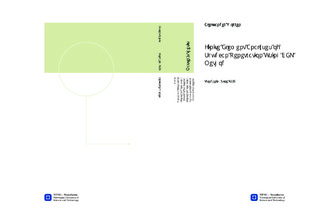| dc.description.abstract | A hazard during installation of jack-up spudcans is punch-through, which is characterized by a peak resistance, followed by a significant reduction in spudcan resistance. This might lead to an uncontrolled rapid leg penetration as the installation generally is load-controlled. The problem is typical for sites where a stiff soil layer is overlying a soft clay layer. Accurate calculation of the expected displacement-resistance curve for these soil conditions is therefore important in order to reduce the risk of uncontrolled punch-through conditions. Numerical simulation of spud-can penetration into seabed during installation of jack-up platforms is a complex problem involving both large strains and large displacements where the geometry changes during penetration e.g. interface between layers. The Coupled-Eulerian-Lagrangion (CEL) method available in the finite element program package ABAQUS is suitable for this type of problem. The main aim of this Master Thesis is therefore to use the CEL method to analyse some published examples of spudcan penetration.Some preliminary tests were performed in Abaqus/Explicit, namely triaxial, oedometer and T-bar tests. It was revealed that the element size had a large impact on the results, where smaller elements increased the accuracy in general. The compression/penetration rate affected mainly the oscillations that occurred in the results. However, the resistance oscillated around an apparently correct mean value, and it was therefore possible to filter out some of the oscillations. Two spudcan penetration cases were chosen for calculation. The cases were found in Sindhu Tjahyono?s doctor thesis (Tjahyono, 2011). Comparison with Tjahyono?s results showed that smaller elements reduce the resistance, while larger elements increase the resistance. This behaviour was also found by the preliminary simulation. The cases with strain-softening were sensitive to mesh size, as the strain-softening were mostly localized in the shear bands, and the thickness to the shear bands were governed by the element size. Consequently can non-conservative result regarding punch-through be obtained if the elements are too small, as the soil behavior becomes more similar to a case where the soil has been fully remolded. Theoretical hand calculations for spudcan penetration were also investigated. SNAME?s guideline proposed in 2002 for two-layered clay was overly conservative. Hossain & Randolph?s method calculated the resistance more accurate, and gave a better description of the soil mechanisms, e.g. cavity depth. The method proposed by Tjahyono gave the closest estimate compared to the FEM calculations. The CEL method in Abaqus/Explicit has proven to be suitable for spudcan penetration problems. The penetration speed affected mainly how much oscillation that occurs in the results. The oscillation may be filtered out as the resistance oscillated around a mean value. The computational cost for these types of problems are large, and it is therefore of interest to find the highest penetration rate for which oscillations may be filtered out. However, there were some difficulties regarding the effects from the element size, especially when trying to include strain-softening behavior. It is important to address this problem, as non-conservative results might be obtained. | nb_NO |

